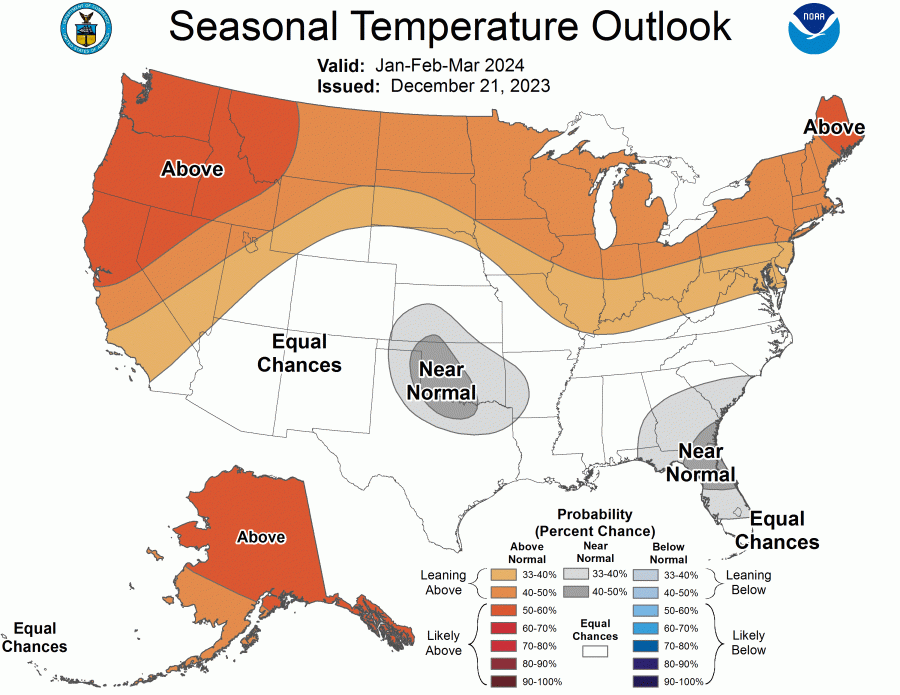Half of states will see a hotter-than-normal start to 2024. Will your region be spared?
(NEXSTAR) – It may be the first day of winter, but weather outlooks released by national forecasters on Thursday look far from wintry.
The Climate Prediction Center’s updated outlook shows about half of states expecting hotter-than-average weather between January and March. It’s a continuation of what we’ve been seeing the past couple months as El Niño has grown stronger and stronger.
A broad band of the U.S., from California to Maine, is predicted to see temperatures warmer than a typical winter. The Pacific Northwest, Maine and Alaska are the areas with the highest odds of a hot winter.

The precipitation outlook for the start of 2024 also looks pretty consistent with a typical El Niño year.
During an El Niño winter, the southern third to half of the United States, including California, tends to see wetter weather. (Exactly where that dividing line falls varies from year to year.)
Meanwhile, the Pacific Northwest and parts of the Ohio Valley tend to be dry and warm. Hawaii also often sees below-average rain during an El Niño year.
This winter, it’s the Gulf and Southeastern states with the highest probability of above-average rain.

Even if sunny skies and warm temperatures in January aren’t “typical” for your region, they may be typical of an El Niño. When comparing the outlooks (above) to the graphic created by NOAA (below) that show El Niño’s impact, the similarities are more apparent.
A wintertime El Niño pattern tends to bring warm and dry weather up north, and wet weather down south. Where the dividing line falls varies year to year.

Its full strength remains to be seen, but the 2023-2024 El Niño is growing more likely to be one for the record books. In a recent update, the Climate Prediction Center said this winter’s El Niño was slightly favored to be “historically strong.” The organization gave it a 54% chance of being one of the five strongest since 1950.
How long this El Niño will last is also uncertain. NOAA forecasters said earlier this month they expect it to wind down sometime between April and June of next year.
Copyright 2023 Nexstar Media Inc. All rights reserved. This material may not be published, broadcast, rewritten, or redistributed. Regular the hill posts








